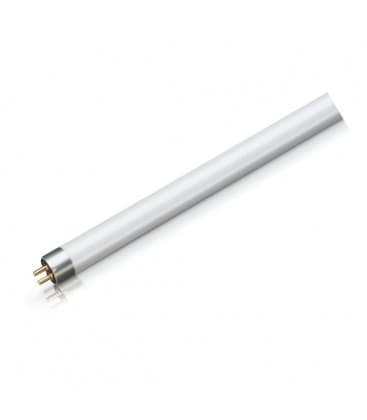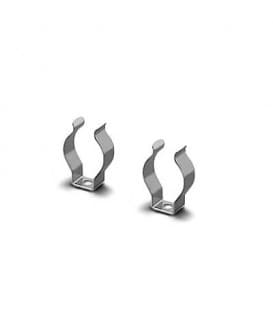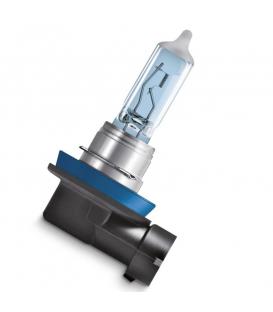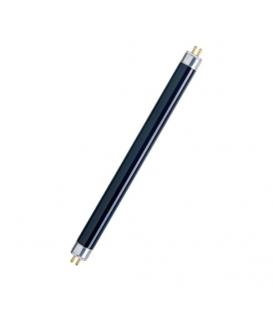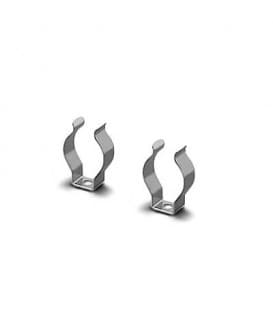951489 | Manufacturer: Philips | EAN: 8711500951489 | MPN: 928001201030
BL TL 15W 10 Mini UV-A G5
More info
Illuminate brilliance with the Actinic BL TL 15W 10 Mini UV-A G5 lamp. This versatile UV-A actinic lamp is perfect for cosmetic nail treatments, photopolymerization, reprographic processes, and insect killer systems. With low UV-B output features, it is a reliable, safe, and sustainable lighting solution. mini, g5, lamp, bl, tl, 15w, 10, compact, uv, actinic
Introducing the Actinic BL TL 15W 10 Mini UV-A G5 Lamp - Illuminate Brilliance
Unlock the Power of Actinic Lighting
Illuminate your world with the Actinic BL TL 15W 10 Mini UV-A G5 lamp, a versatile lighting solution that transcends boundaries. This exceptional UV-A actinic lamp is not just any ordinary lighting device; it's a powerful tool that finds applications in various industries. From enhancing cosmetic nail treatments to precise photopolymerization, efficient reprographic processes, and effective electronic insect killer systems, this lamp does it all.
Unlocking the Essence
Delve into the depths of this remarkable Actinic lamp, and you'll discover a world of innovation and excellence. Designed with precision, it boasts a cap-base G5 and bulb type T16, ensuring top-tier performance in a compact form. With a useful life of up to 1000 hours, this lamp stands the test of time, providing you with consistent, reliable lighting.
Illuminating Features
- Optimized Spectrum: The Actinic BL TL 15W 10 Mini UV-A G5 lamp features an optimized spectrum that perfectly matches the eye sensitivity of the housefly, making it ideal for attracting insects.
- Low UV-B Output: Rest easy knowing that this lamp has virtually no UV-B output, ensuring the safety of your environment.
- Eco-Friendly: With the lowest mercury content in the industry and being 100% lead-free, this lamp is an environmentally conscious choice.
- Versatility: Available in a wide range of form factors, including straight (T5, T8, T12), circular (TL-E), and compact (PL-S/PL-L), you have the flexibility to design your electronic fly killer system just the way you want it.
Applications - Shedding Light on Possibilities
The Actinic BL TL 15W 10 Mini UV-A G5 lamp is your trusted companion in a variety of applications:
- Cosmetic Nail Treatments: Achieve flawless nail treatments with the precise illumination provided by this lamp.
- Photopolymerization: Perfect for photopolymerization processes that demand accuracy and consistency.
- Reprographic Processes: Enhance the efficiency of your reprographic operations with the exceptional lighting quality.
- Insect Killer Systems: Create effective electronic insect killer systems that attract pests while ensuring a safe environment.
Benefits That Shine Bright
- Reliability: With a maximum lifespan of 1000 hours, you can count on this lamp for consistent, long-lasting performance.
- Safety First: The low UV-B output guarantees the safety of your surroundings, making it suitable for various applications.
- Eco-Conscious Choice: Choose sustainability with a lamp that has the lowest mercury content and is lead-free.
- Design Freedom: Explore various form factors and wattages to create customized electronic fly killer designs.
Technical Electrical Data
- Cap-Base: G5
- Bulb Type: T16
- Useful Life: Up to 1000 hours
- Color Code: 10
- Color Designation: Actinic
- Depreciation: 45% at 2000 hours
- Lamp Wattage: 15 W
- Lamp Voltage: 43 V
- Lamp Current: 0.40 A
- UV-A Power (IEC): 3 W
- UV-B/UV-A (IEC): 0.2%
- Base Face to Base Face A: 288.3 mm (max)
- Insertion Length B: 293 mm (min), 295.4 mm (max)
- Overall Length C: 302.5 mm (max)
- Diameter D: 16 mm (max)
Elevate your lighting game with the Actinic BL TL 15W 10 Mini UV-A G5 lamp. Whether you're in the beauty industry, working with photopolymerization, reprographic processes, or in need of effective insect control, this lamp delivers exceptional performance. It's not just a lamp; it's a solution that shines bright while being eco-friendly. Choose brilliance, choose Actinic BL TL 15W 10 Mini UV-A G5.
Applications
• Insect traps, Electronic Fly Killers (EFKs), Photopolymerization, Reprographic Processes
Reviews
 (28)
(28) (0)
(0) (0)
(0) (0)
(0) (0)
(0)




























